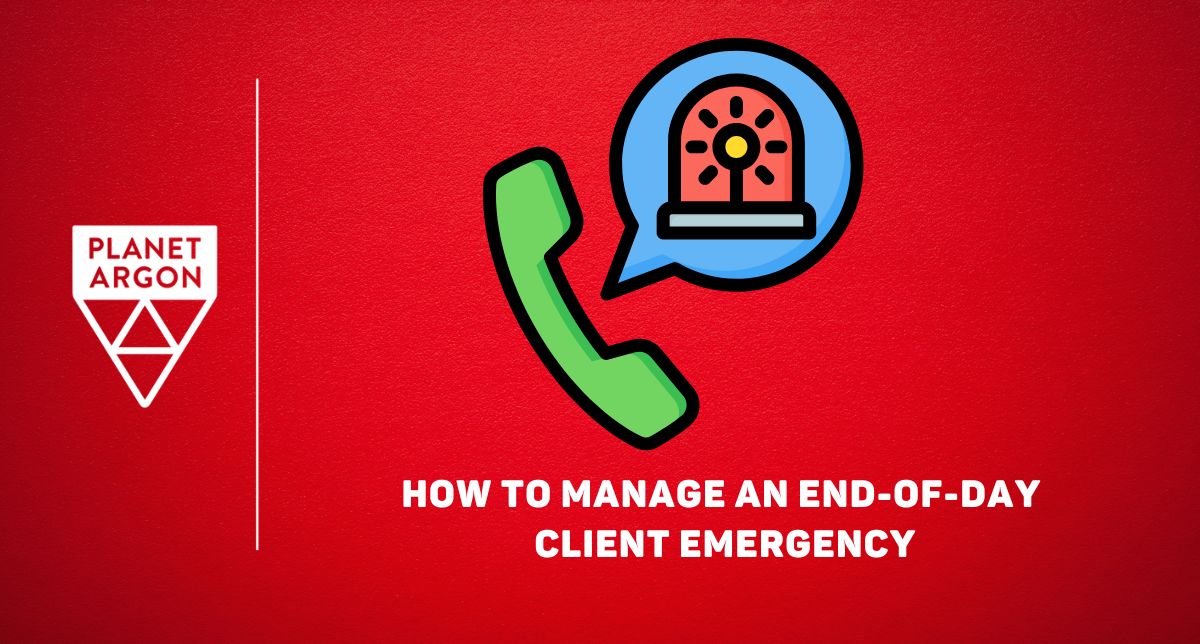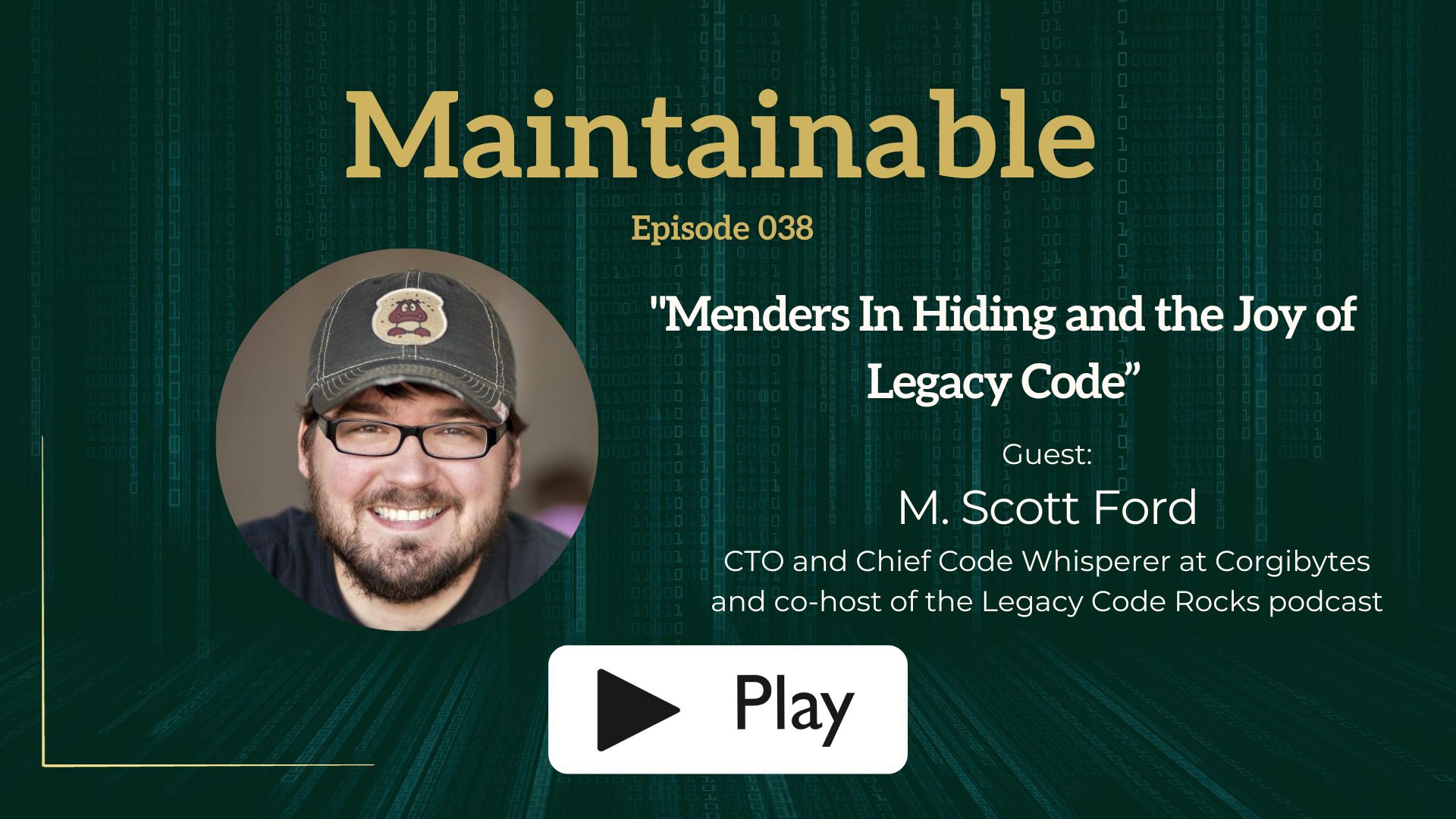
We've all been there: You're packing up for the day, ready to disconnect, when suddenly—ping! An urgent Slack message from a client. Your heart races, your to-do list is out the window, the client is in crisis mode, and the pressure is on.
It's easy to feel overwhelmed in these moments, but the key is staying composed and handling the situation systematically.
Let's break down how on of our developers, Liz Pantalone, navigated an end-of-day client emergency and what we can learn from her approach.
Respond Quickly and Acknowledge the Issue
When an emergency hits, the first instinct might be to jump straight into troubleshooting. But before you do anything else, pause and respond. Acknowledge the client's message promptly. Even if you don’t have an immediate solution, letting them know you’re aware of the issue reassures them that help is on the way.
I’ll take a look.”
Why It Matters:
- Clients in crisis need to feel heard. A quick acknowledgment reassures them that their issue is a priority.
- Even if you can't solve the problem immediately, a fast response shows you're on it.
Gather the Details
Before diving into the issue, you need a clear understanding of what’s going wrong. Assumptions can lead you down the wrong path. Ask specific, clarifying questions to gather all relevant details. Focus on understanding the scope and specifics of the problem.
Could you let me know which file you were attempting to overwrite? If you could share the link to it…”
Why It Matters:
- Asking the right questions saves time in the long run.
- It shows the client you're methodical and invested in solving their problem.
Validate and Narrow Down the Problem
Once you have the details, the next step is to verify the issue. Is it isolated, or part of a larger problem? Try to reproduce the issue in a controlled environment. Test similar scenarios to identify whether the problem is specific or systemic.
I was able to successfully replace a test PDF file with a PEG file. So let’s see what may be different about the C&C file.”
Why It Matters:
- This helps isolate the root cause by eliminating variables.
- It builds client confidence as they see you're approaching the issue systematically.
Investigate Thoroughly
Now it’s time to dig deeper. Surface-level checks might miss hidden issues. Review system logs, database records, and other diagnostic tools to uncover anomalies or errors. Look beyond the obvious.
Ok, I will look at the logs to see if I see anything in the last few minutes.”
Why It Matters:
- Logs often reveal hidden issues that aren't immediately visible.
- Proactive investigation helps uncover if the problem lies with user input, system configuration, or external factors.
Encourage Collaboration
Troubleshooting doesn’t have to be a solo mission. Engaging the client can lead to faster results, so keep them in the loop. Ask them to perform specific actions while you monitor the system, turning troubleshooting into a collaborative effort.
It could be. Want to try again while I check the logs?”
Why It Matters:
- Collaborative troubleshooting speeds up resolution.
- It keeps the client informed and makes them feel like part of the solution.
Document Lessons Learned
Once the issue is resolved, don’t just move on. Take a moment to reflect. Document what went wrong, how it was resolved, and any gaps in the system that contributed to the problem. Suggest improvements if needed.
Could we have a ticket for Extranet File Upload Module to add more user-facing error handling?”
Why It Matters:
- Post-mortem analysis helps improve systems and prevent future issues.
- Documenting lessons learned ensures continuous improvement.
Maintain Professionalism and Empathy
Crises are stressful—for both you and the client. Your demeanor matters. Stay calm, professional, and empathetic. Reassure the client that you’re in control, even if you’re still troubleshooting behind the scenes.
Well, I’m happy it’s working!”
Why It Matters:
- Empathy builds trust. Clients often feel stressed in these situations.
- A calm, understanding approach can make a big difference in the client’s experience.
Follow Up and Close the Loop
Resolution isn’t the end of the story. Clear follow-up ensures nothing falls through the cracks. Once the issue is resolved, confirm with the client that everything is working as expected. Let them know how to reach you if any further issues arise.
I’m going to head out for now. But I’ll have Slack on my phone if anything else pops up.”
Why It Matters:
- Clear communication ensures the client feels supported even after the issue is resolved.
- It provides closure and reassurance that you're still available if needed.
Proactively Suggest Improvements
Don’t just fix the problem—help prevent it from happening again. Identify opportunities for system improvements and suggest them to the client or your team. Proactive recommendations demonstrate your commitment to quality.
The system needs to have some more error handling added in there to help the user out if this happens again.”
Why It Matters:
- Proposing improvements shows you're thinking ahead and committed to excellence.
- Clients appreciate developers who proactively suggest ways to enhance their systems.
Tune In for Thoughts on Prioritizing Technical Debt Backlogs
In this Maintainable Software Podcast episode, M. Scott Ford discusses the distinctions between "makers and menders," strategies for prioritizing technical debt backlogs, and methods for providing constructive feedback to developers.
Key Takeaways for Handling Client Emergencies
When faced with a last-minute emergency, keep this checklist in mind:
- Acknowledge the issue immediately to reassure the client.
- Ask clarifying questions to fully understand the problem.
- Reproduce the issue and narrow down potential causes.
- Investigate logs or system details for deeper insights.
- Keep the client informed and collaborate as needed.
- Document lessons learned to prevent similar issues.
- Remain calm and empathetic to build trust.
- Ensure clear follow-up to close the loop.
- Propose proactive improvements to enhance the system.
By following these steps, you can turn an end-of-day emergency into an opportunity to showcase your problem-solving skills and professionalism. Liz's approach is a great example of how to handle urgent client issues with care, competence, and a collaborative mindset.
The next time you find yourself in a similar situation, take a page from her playbook!
We Think You'll Also Enjoy Reading...
- "We Need This Done in a Hurry!" How to Prepare for a Rushed Project
- How to Build Trust With Clients - One Sprint (or Marble!) at a Time
- Emotional Intelligence for Project Managers
FAQ's
Q: "What qualifies as a client emergency in a web development project?"
A: Client emergencies usually involve unexpected issues that impact live applications—such as broken features, failed deployments, or urgent data access problems. These typically require fast responses to avoid downtime or lost revenue.
Q: "How can I prevent these kinds of emergencies in the future?"
A: Regular maintenance, timely updates, and clear communication with your dev team can drastically reduce emergencies. We also recommend proactively addressing technical debt and setting realistic launch timelines.
Q: "Does Planet Argon offer emergency support retainers?"
A: Yes! Our emergency support services are designed to offer prioritized support, regular maintenance, and faster response times—perfect for teams that want peace of mind during critical moments.
